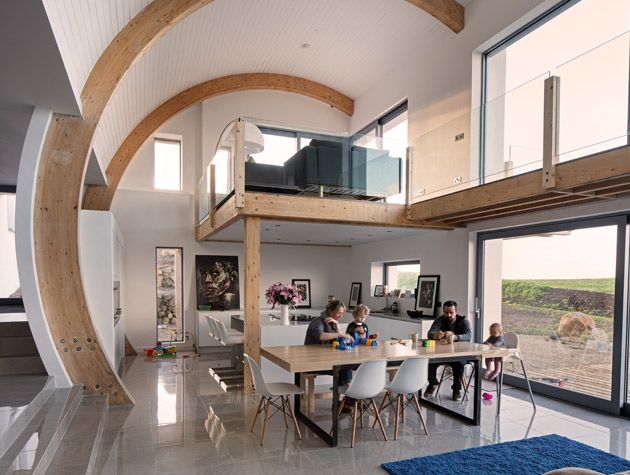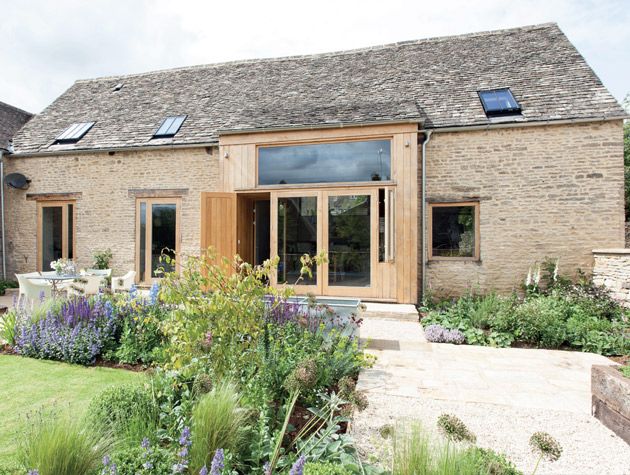Kevin McCloud on the impact of bad air quality in our homes
Our editor-at-large has been considering the impact of bad air quality in our homes.

How do you measure a happy house? By the number of parties thrown there? Another metric may be the amount of bread/cakes/Yorkshire puddings that get made on the premises. Or the amount of time teenagers spend out of their rooms – not on their screens – in conversation with other members of the family. Fat chance of that.
You can try to measure it in the number of widescreen TVs or toilets that can be flushed simultaneously, however these are not measures of happiness but of delusion. So I’d try to use another H word to measure happiness. Health. Restarting the question, how do you measure a healthy house? That’s easier because you measure it in the health of its inhabitants.
Setting aside the health benefits of Yorkshire puddings, the single factor that most affects human health in buildings is air quality. You may disagree because you live in an unpolluted rural area in a rickety old house, where the single biggest problem is black mould in your bathroom and on your windowsills thanks to condensation. You may also fret over your children’s asthma and worry that the carpets you laid are held together with petrochemical glue that could well be leaching a bunch of hormone-disrupting phthalate gases into their bedrooms.
The point is that if you can introduce enough fresh air into your building and control its quality at the same time, you can deal with all of these problems. You’ll have seen mechanical ventilation systems on Grand Designs on TV. They usually come with a heat exchanger that captures up to 95 per cent of the heat in the stale air being extracted from the building, transferring it into the fresh air being imported. I’m a fan of these systems because they are very efficient (they cost about 20p a day to run) and they can introduce warmed, fresh air into a home faster than Building Regulations require – they can, in effect, ‘clean’ your building of stale air and everything nasty in it.
But I’m also a fan because I’m a chronic asthmatic and I respond badly to mould spores, dust mites, pollen and high humidity. I’ve installed MVHR systems into two houses and I swear by it. The filters in the system screen outdoor dust, particulates and pollen. The air introduced into the building is nearly always dryer than the exhaust air being sucked out, which means that the general relative humidity is around 55-65 per cent, which is too low for moulds to thrive and means less condensation, too. The figures are for a modern, airtight house but I’ve also achieved them in a 400-year-old historic home with no damp-proof course. You do have to pay attention to the air-tightness of the building in order to achieve this, and it’s only really possible with sealed secondary glazing.

MVHR has its detractors, though. There are historic building consultants who shiver at the idea of any 21st-century technology being compatible with an old building. They worry that the ducting won’t fit (Airflow makes a 10cm diameter flexible pipe that’ll wind its way round most old homes); they point to the front door, aghast that there isn’t a two-inch gap under it for the wind to get in (unregulated ventilation in old buildings from draughty windows and openings is in fact very unreliable at ventilating the whole building); they are sceptical that it’s possible to reduce humidity with a machine and control the environment in an ageing building, yet it’s what art galleries and venerable old museums have been doing for half a century to help protect their artefacts.
Other naysayers don’t believe that the British, as a nation, want to operate our buildings like machines; that the systems are too high-tech (it’s almost fit and forget, in fact, providing that it’s properly designed for your home and set up correctly); that people don’t bother cleaning the filters (if you wash yours every six months, it’ll be a salutary reminder of the rubbish that would otherwise make its way into your home); and that it forces you to keep your windows closed and building sealed (that’s just nonsense). Admittedly, I do have a problem with landlords and housing associations who fit these systems and then don’t tell their residents how to maintain and clean the filters. MVHR systems are like boilers; they need attention now and again.
According to the World Health Organisation, up to 7 million people die prematurely every year because of air pollution. The link between air quality, human health and, consequently, happiness is therefore pretty obvious. Most of us live in buildings constructed before the indoor air environment was ever properly considered, and we continue to fill those homes with vinyl flooring, curtains, paints and carpets that are held together and made flexible by the addition of plastic softeners and glues, all of which gently off-gas for years. We also heat those homes to levels they were never intended for, increasing their humidity, and we now retrofit them with insulation and double glazing, which is making them evermore airtight. They may look lovely; they may be filled with trinkets that bring us moments of pleasure, but if I wanted to make a home happy and healthy, I’d first of all want to know I could breathe easy.
Photography: Mark Bolton, Aidan Monaghan and Matt Chisnall. Lead image: Lukasz Sszmigiel on Unsplash









